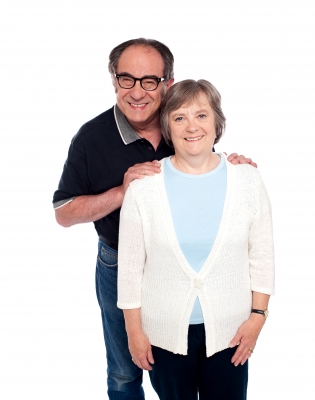Over 100 years ago, German psychiatrist, Alois Alzheimer, discovered a devastating condition that would bear his name. Unfortunately, we are no closer to a cure or treatment for this debilitating disease that affects roughly 135 million people in the world. However, in the Netherlands, there is a small village that is redefining how people with dementia can live and feel at home.
Known as “dementia village”, this small community not far from Amsterdam in the Netherlands, officially called Hogewey, has become the world’s most innovative model where dementia patients can feel at home. There are around 150 people that reside in Hogewey, all with severe dementia. While the facility is fenced in and has a security gate, residents are allowed to roam and follow what they remember as their daily routines. Instead of sitting in front of a TV, residents can visit the supermarket, theater, hair salon, café or gardens.
All residents live in two-story dormitories with 6 to 8 people in each apartment. Caregivers live with them, however they do not wear uniforms, and residents are allowed to cook and clean if they want to. All apartments are designed around lifestyle themes, with residents living together based on similar pasts: artists living together and patients with religious backgrounds residing together. All apartments are designed to reinforce comfort and leave the residents feeling like little has changed in their life. Even the food they eat is a representation of the life they remember.
The managers at Hogewey used to run a traditional nursing home and have learned from that experience what not to do with Alzheimer’s patients. For instance, if a resident approaches a door or gate, they are not trying to escape, they simply just want to talk through it. Once they are told the door is locked, they usually walk away. It was also found that caregivers trying to correct residents was pointless. Instead, if a resident makes a strange supermarket purchase, the caregiver lets it happen and then quietly returns it later. The managers at Hogewey realize the world they have created is largely illusory, but that is the whole point. Why force reality on a person who cannot grasp it anymore? They say all that matter is to provide a place that is recognizable and safe.
While this approach may be questioned, it is working. Compared to the patients at the traditional nursing home that Hogewey replaced, residents are taking fewer medications and eating better. They are also living longer.
Experts agree that not all dementia patients need to be placed in a special community. It is best for them to stay at home as long as possible. However, making this happen can be tricky considering health and safety threats. Based on a trial run by a team of researchers from Johns Hopkins University School of Medicine, visits from “memory care coordinators” could make a big difference. Of the 100 people in the trial, those who received an in-home analysis, along with follow-up monthly check-ins with their families stayed at home an average of 9.5 months longer than the control group. Lead researcher Quincy Miles Samus says, this “can make a huge difference in terms of comfort, money and quality of life.”
Resource: http://www.smithsonianmag.com/innovation/people-dementia-does-it-take-village-180949942/?no-ist




